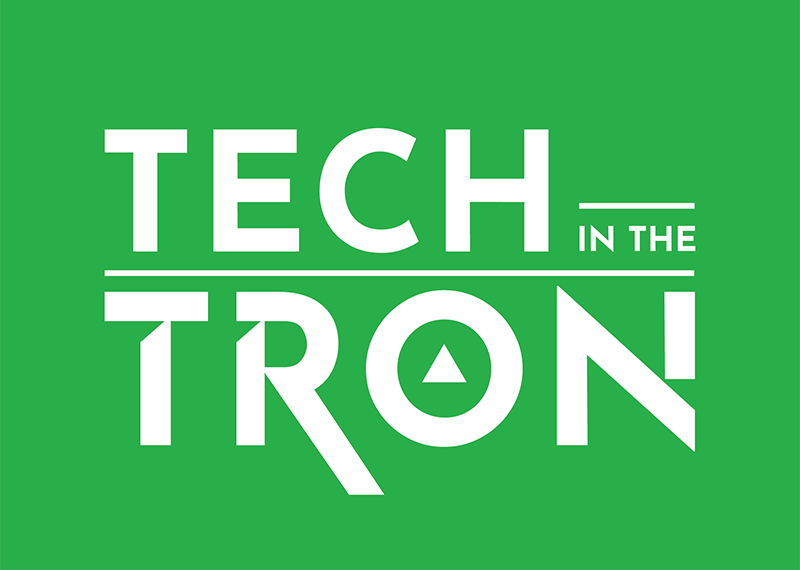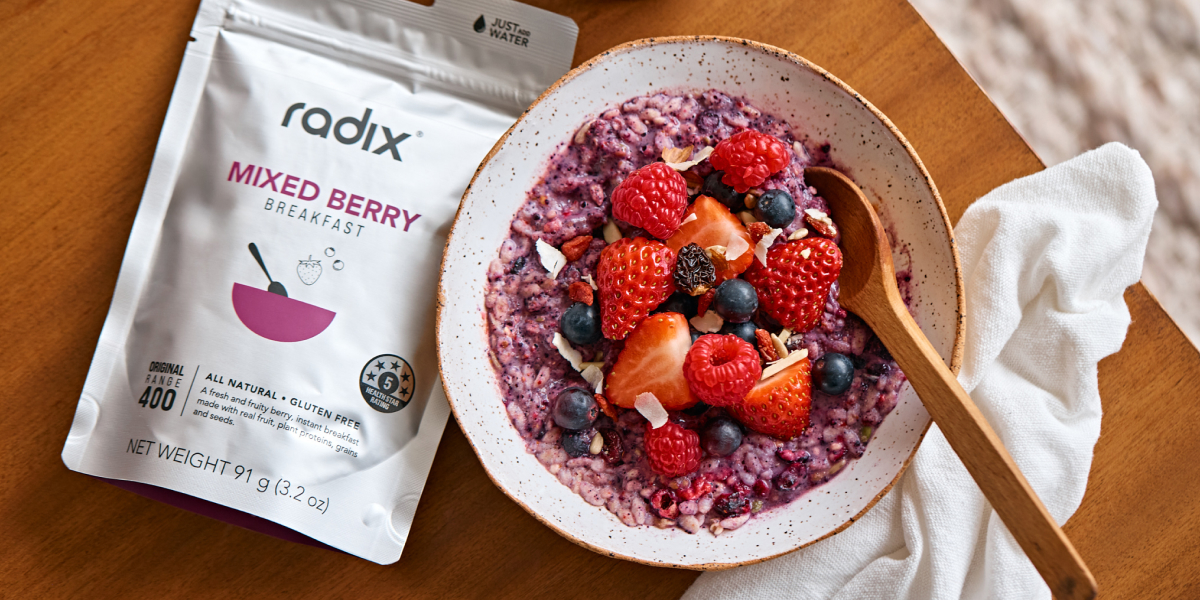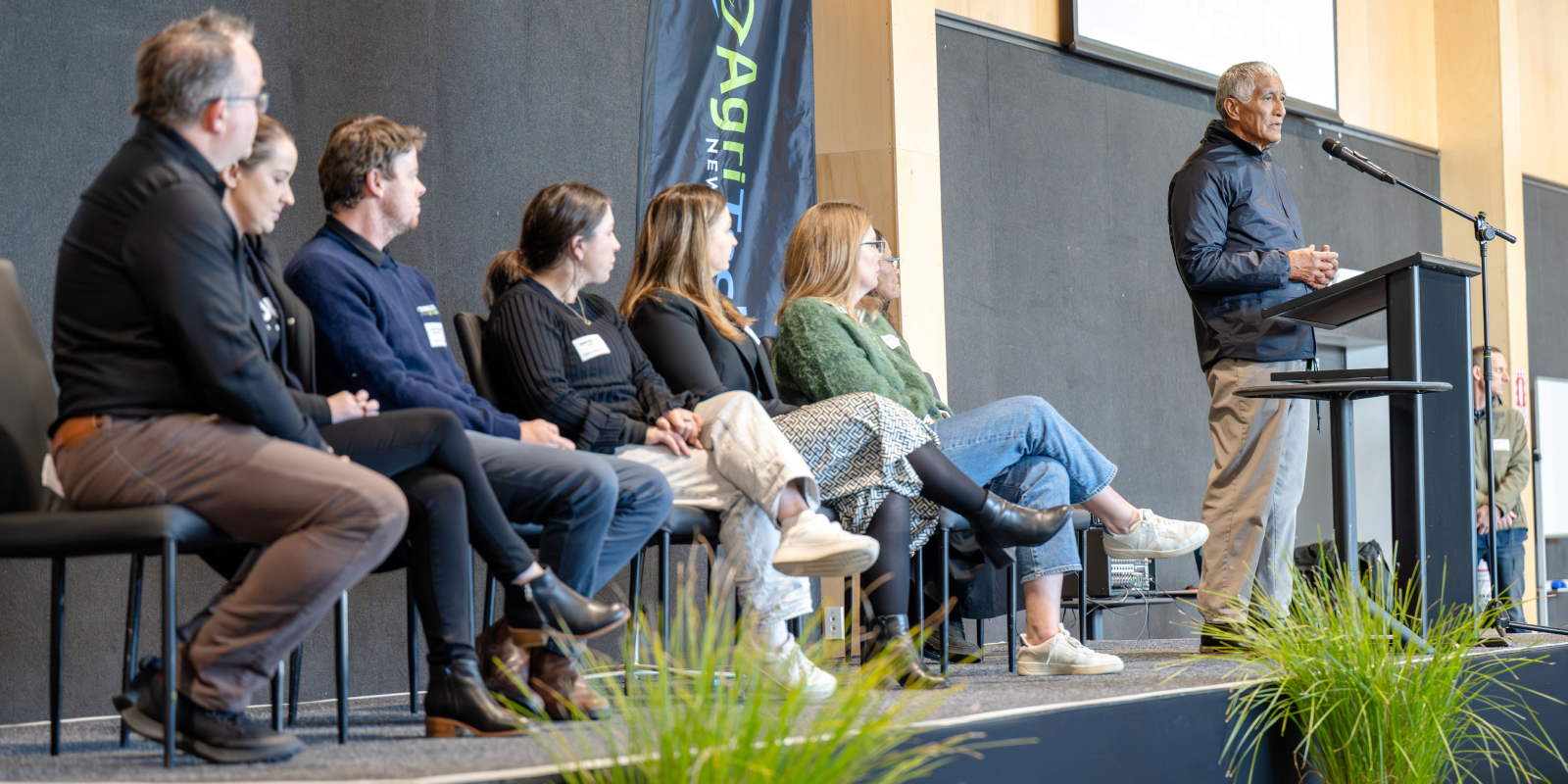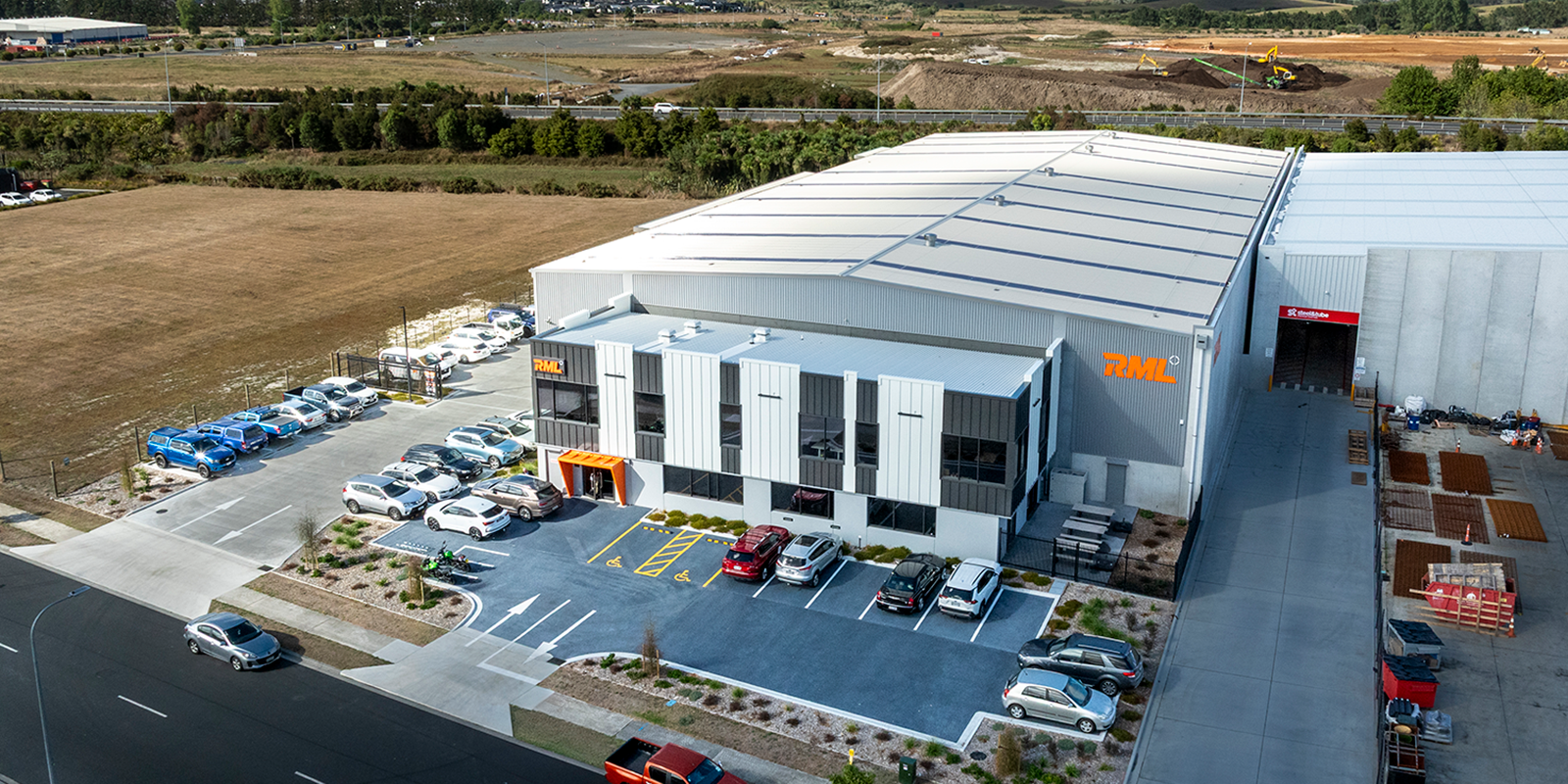The platform ingests massive food and health datasets and maps 400+ global dietary standards to set a clear nutrient target for each product.
Radix uses this tool to develop customised recipes with specific blends of natural ingredients, all meticulously chosen to maximise nutritional impact.
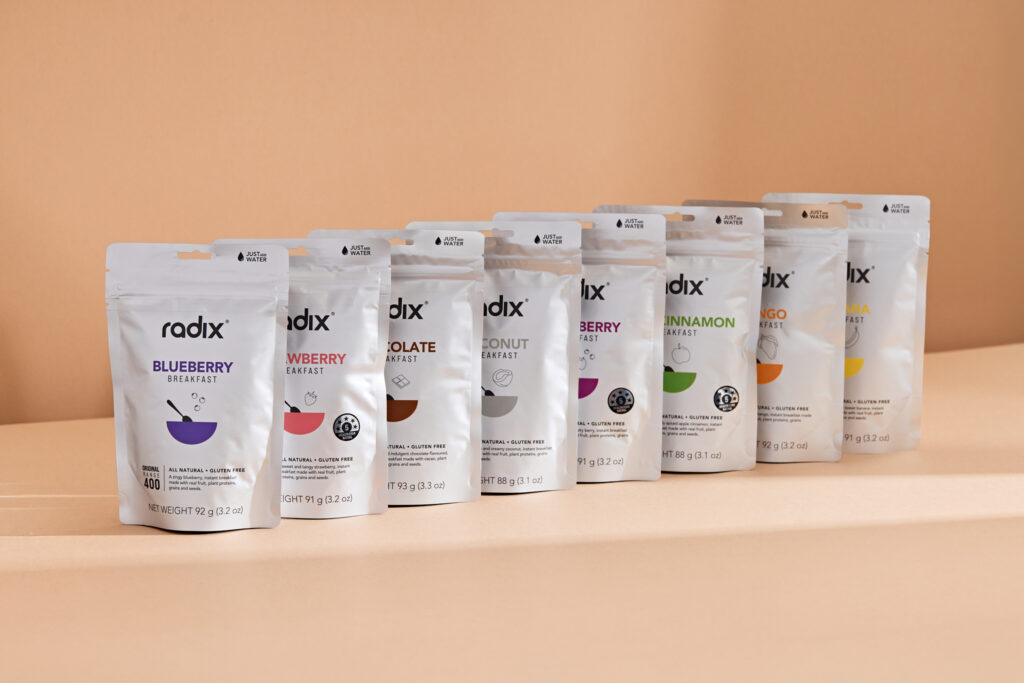
The Radix breakfast range
The software then benchmarks each recipe against a global dataset of 4 million+ products, tracking around 750 nutrients, to see how it compares with other commercially available ready-made meals and protein powders.
This data-driven approach sits alongside Radix’s belief that athletes, busy professionals and parents all want the same thing: an easy way to eat healthier and feel better.
Breaking the mass-market mould
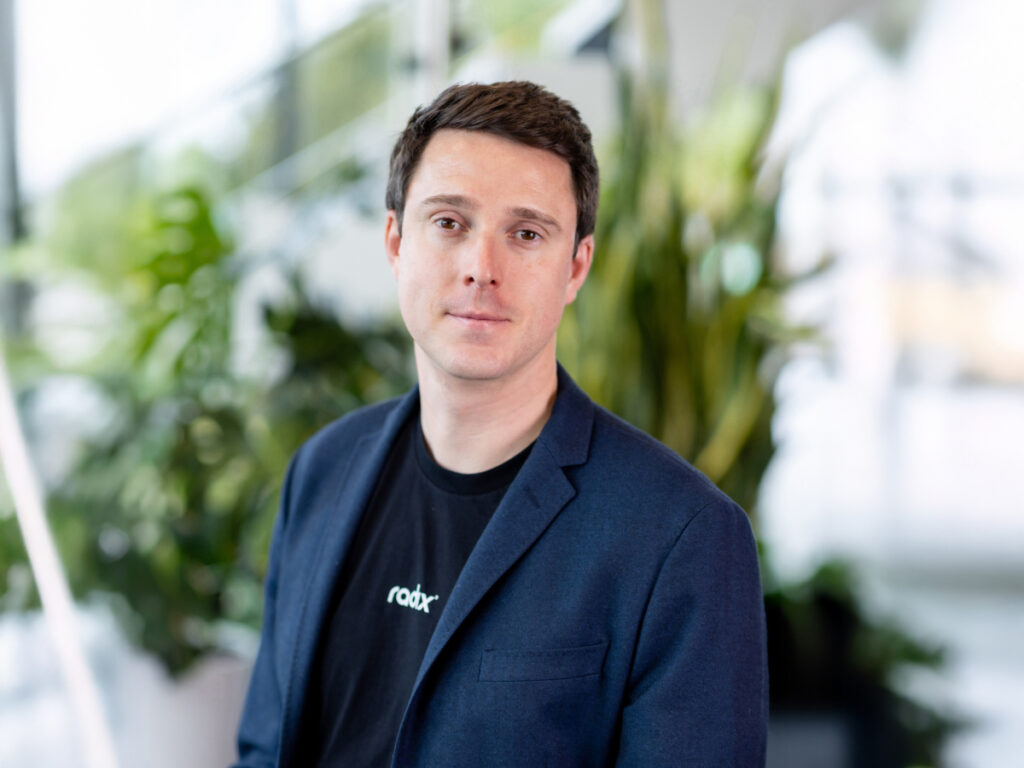
Mike Rudling, founder of Radix
Former elite athlete, Mike Rudling, founded Radix in 2013 because the packaged food industry wasn’t applying what nutritional science already knew.
“There’s a gap between what science recommends and what’s on the shelf. Our job is to narrow that gap with everyday nutritionally complete products that taste great,” says Mike.
Unlike most food brands that outsource production, Radix controls the entire process in-house, including design, manufacturing, testing and distribution.
According to Mike, that end-to-end ownership means tighter quality control, faster iteration and the ability to scale on their own terms.
“Owning development, production and distribution lets us react quickly based on customer needs. If we want to update a recipe or adjust packaging, we’re not waiting in a co-manufacturer’s queue.”
Radix’s range, which now spans instant breakfasts, quick savoury meals, protein powders and smoothies, sells direct to consumers online in NZ and Australia. They’re also in specialist sport retail outlets on both sides of the Tasman and the UK, and are beginning to scale through supermarkets in New Zealand – a high-growth focus for the team.
Why Hamilton works
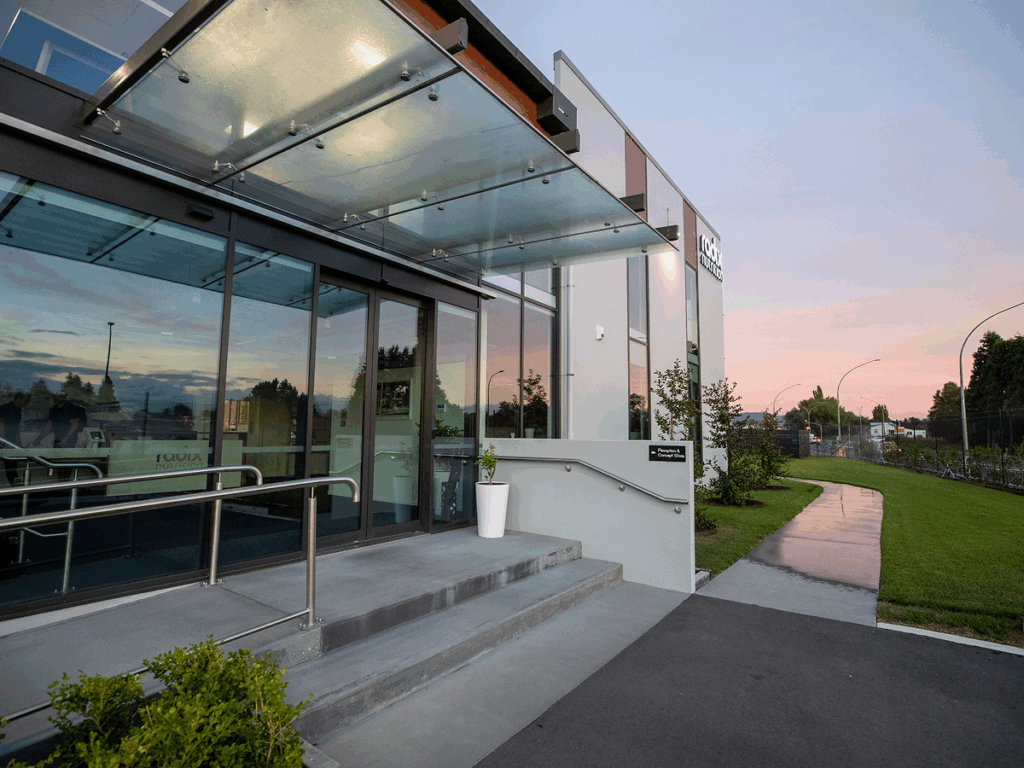
The Radix building in Horotiu
Freedom to grow
While Radix could have built their software anywhere, the ability to purpose-build on serviced land was the main draw, says GM Leighton Cosgrave.
“Choosing Hamilton as a base meant we could take the square metres we needed to start, have immediate access to more as we grow and keep expanding on the same site, rather than being landlocked as we likely would have been elsewhere,” he says
Value-for-money was part of the calculus too, adds Leighton. Competitive land and facility costs meant they could design for scale and usability with wide access for trucks and couriers, open space and plenty of on-site parking.
Specialist suppliers on the doorstep
As Leighton explains, scaling a food-tech business takes more than recipes – it relies on specialist machinery and the people who can keep it running.
“On a basic level, the specialist freeze-drying lines that we run are similar to what’s used for dairy across the region.
“That’s why being based here is such a competitive advantage for us. We’re down the road from GEA Farm Technologies who have the capabilities and local parts we need to keep production moving.”
Leighton also points to the depth of the stainless fabrication sector, powered by great companies like Hendl & Murray, Tira and Longveld.
“Per capita I think we have more stainless workshops or fabrication capability than any other region, and that’s good peace of mind as we look to invest in our operations here.”
Core partners are close, too. “Fonterra has been pivotal in the development of our whey-based protein powders, adding their R&D capabilities, innovation and dairy science expertise,” he says.
Connectivity and freedom to move
Being based in Hamilton isn’t just convenient, it’s strategic, explains Leighton.
He believes it gives them a practical edge, cutting the lag of logistics and connecting them to the people and parts they need to keep expanding and innovating.
“Direct links to the country’s two largest seaports make importing and exporting accessible, faster and easier,” says Leighton.
He goes on to describe Hamilton as “sized well for business travel”.
“This location also puts us in a prime spot to access suppliers and vendors. It’s completely achievable to do just about any day trip from Hamilton to visit our key partners and vice versa.
“It’s actually quicker for us to visit a supplier in South Auckland than it is for someone on the North Shore to do the same thing.”
And within Hamilton itself, the ease of moving around makes a difference too, he says.
“There’s always something we need access to quickly. An idea might get sparked and we need to duck out for ingredients or shoot to Auckland for a specialist part. Here, we can do that in a good amount of time – that feeds the excitement when you’re a company that’s constantly innovating.”
The return of international links at Hamilton Airport has sharpened these advantages, with Jetstar now flying direct to Sydney and the Gold Coast, and both Air New Zealand and Jetstar adding jet services to the Hamilton–Christchurch route.
“With young families and tight schedules, the ability to get there and back in the same day is invaluable. “And Hamilton Airport itself is super simple and easy…you can almost treat it like a private jet terminal. Turn up with a backpack, grab a coffee, and you’re on a plane,” he says.
What’s next?
Looking ahead, Radix is focused on the fundamentals: scaling supermarket distribution in New Zealand, investing in growth across Australia and preparing for Europe and the US.
Version 10 of its product range lands mid-October, which Mike says lifts the nutritional profile by around 20% and enhances flavours based on customer feedback.
Longer term, Radix is looking to use their software to support personalised nutrition. This will mean allowing customers to link data from wearable devices to inform diet advice.
Words by Hannah McCreery. Images supplied by Radix.
